How to Fix an Overflowing Toilet in 5 Minutes
Last Updated on August 1, 2023 by toilethaven
What Causes a Toilet to Overflow?
Homeowners will, from time to time, have to deal with an overflowing toilet. A toilet will either be overflowing from the bowl or the tank.
If your toilet is overflowing when you flush it, the toilet drain is blocked. The clog creates a restriction that prevents water and waste from flowing out, resulting in an overflowing toilet. If the clog is partial, the water level will drop after a few minutes, but with a solid clog, the toilet will not drain at all.
An overflowing toilet is a sign of a clogged toilet drain. The clog could be solid or a partial one. This prevents waste from flowing down the sewer line, causing the toilet bowl to fill with water and overflowing when flushed.
If the toilet is overflowing from the toilet tank, it means the water level in the tank is too high, and the overflow tube is higher than it should be. Ideally, the top of the overflow tube should be ½ inch below the flush handle.
When you notice your toilet overflowing, turn off the water supply to the toilet and don’t flush the toilet. Drain the bowl up to the half-level mark, then use a plunger or toilet auger to clear the clog.
To fix an overflowing toilet, wait for the water level in the bowl to drop a little or drain out some of the water using a cup. Use a flange plunger to unclog the toilet. If the plunger does not clear the clog, snake the toilet drain line using an auger.
An overflowing toilet may fix itself, but that is not always true. If the clog is caused by toilet paper or soap, it will break down after some time, but if the clog is caused by something that cannot melt or dissolve, the overflowing toilet will not fix itself.
To fix an overflowing toilet without a plunger, snake the toilet using a toilet auger. Alternatively, you can use baking soda and vinegar combined with hot water to break down and clear the clog.
How to Stop An Overflowing Toilet
Before you can fix an overflowing toilet, you should first stop the overflow. Depending on the design of your toilet, there are a couple of ways to go about this. Please ensure you have rubber gloves on your hands.
1. Turn off the toilet shut-off valves
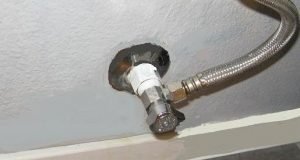
The shut-off valve is located on the wall behind the toilet. The water supply line runs from here to the toilet. Turn that valve clockwise. This will stop the water from flowing to the toilet.
2. Lift up the Toilet Float
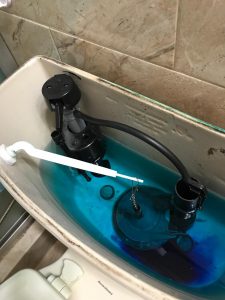
This is what to do if you cannot find a shut-off valve in your toilet. Remove your toilet tank lid and place it somewhere safe. Your toilet will either have a float ball or a float cup. Lift the float up and secure it in that position using anything stable, like a piece of wood. This will shut off the fill valve.
3. Shut off the main house valve
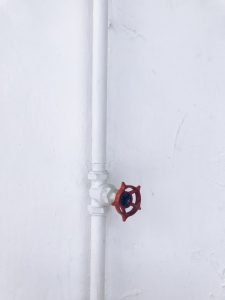
This will stop the water flow into the entire house. The main house shut-off valve location will vary depending on where you live, but it is mainly located in the basement near the water heater. It is also installed next to the water meter, so if you know where the meter is, you should find it. Turn it clockwise until it cannot turn anymore.
How to Fix an Overflowing Toilet
Although different things cause an overflowing toilet, a clogged toilet drain is always the prime suspect, and it, therefore, makes more sense to start there. This is, however, if the overflow is in that bowl and not the tank.
If the toilet is overflowing from the tank, you will need first to check out why the overflow tube is not working as designed. This is, therefore, how to fix an overflowing toilet bowl.
1. Plunge the Toilet
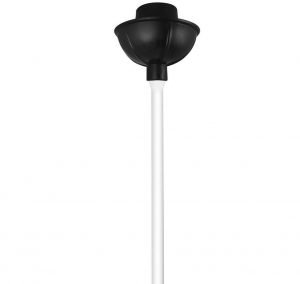
A toilet plunger is an effective tool for unclogging toilets; every bathroom should have one. You cannot put the plunger straight inside a toilet bowl full to the brim. The water will splash all over your face.
Scoop the water into the bowl with a cup and empty it into a bucket. When most of the water is removed, you can now use your plunger. For effective plunging, ensure the plunger completely covers the toilet outlet and that your first plunge is gentle to remove air and completely engage the plunger.
Again, there are 2 types of plungers. Flat-bottomed plungers and flange plungers. For best results, use flange plungers to unclog a toilet.
Now plunge aggressively 15-20 times and see if the water is draining. To be sure the drain is completely unclogged, flush the toilet a couple of times. If you do not have a toilet plunger, here are several ways to unclog an overflowing toilet without a plunger
2. Snake the Toilet
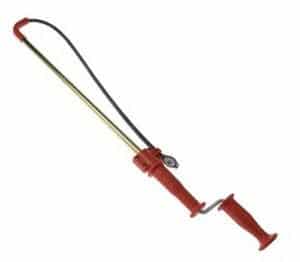
If the toilet plunger did not manage to get the job done, a toilet auger might be of help. It is long and flexible.
A toilet snake which is also called a toilet auger is a long cable with a head with blades and a cranking handle that works by either shredding the toilet clogs into small pieces or hooking them and removing them from the toilet.
Introduce the toilet auger gently into the toilet bowl outlet and through the trap. Slowly start cranking clockwise until you encounter any resistance. Crank the handle counterclockwise and retrieve it to see if you have hooked onto anything.
Repeat this process to make sure the drain is free. Most toilet augers are only 3 to 6 feet in length and are sometimes limited by their length if the clog is deeper in the drain. In this case, you might decide to hire a longer motorized toilet auger or call in a plumber.
There are also some other fantastic ways of unclogging a toilet without a plunger or an auger. Check out how you can fix an overflowing without a plunger here.
3. Unclog the Vent Stuck
The vent stuck passes the sewer gases from the roof of the house. Sometimes the vent is blocked by leaves, animal nests, snow, or even dead birds and rodents.
Use a ladder to climb to the roof of the house armed with a garden snake. Once on the roof, try to see if you can see any blockade at the top that you can remove with your hands.
If not, proceed to pour water inside the vent using the hose. The weight of the water will unclog the vent, and hopefully, this will fix your problem.
How to Fix an Overflowing Toilet Tank
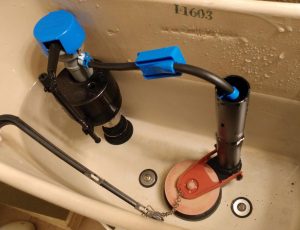
Toilet tanks are built with an overflow tube which is supposed to send excess water in the toilet tank back to the toilet bowl and therefore avoid overflowing. In order for this to work flawlessly, the overflow tube has to be well installed.
The top of the overflow tube should be about one inch below the flush lever. If your overflow tube is, therefore, higher than that and the fill valve is filling the tank with water non-stop, you will end up with an overflowing toilet.
To fix this problem cut the overflow tube at the right height using a small hack saw. This will stop your toilet from overflowing, but you will now have to fix a running toilet. This is because the water in the tank will now be flowing to the bowl through the overflow tube.
To fix this problem, you will need to adjust the toilet float height or replace the fill valve. To know how to adjust the water lever in the toilet tank, read this post, while if you want to know how to replace a toilet fill valve, you should check out this post.
Conclusion
Sometimes you might try your level best but, unfortunately, not fix an overflowing toilet. In this case, you will have no option but to call in a professional plumber. Plumbers have more experience and advanced tools. Some clogged overflowing toilets might even need the plumber first to remove them to access the drainpipe without scratching the toilet.